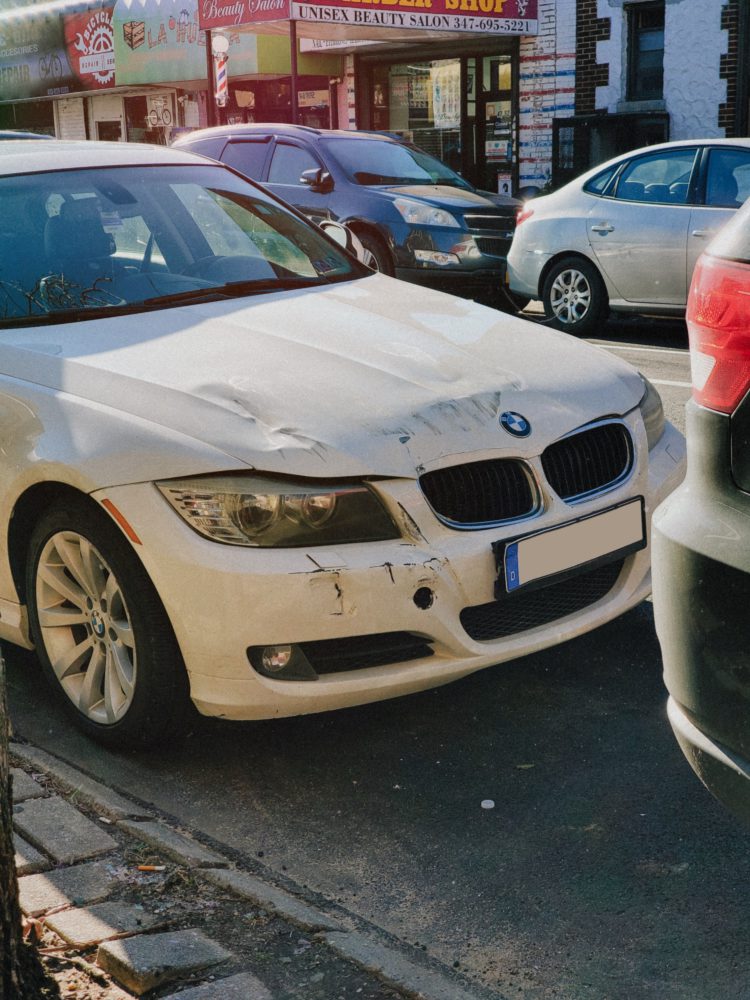We don’t like stereotypes. It’s why we believe in pay-by-mile insurance. It means we can charge based on what you actually do with your car, not just what we think you might do. Likewise, whether car modifications should affect your insurance or not should really depend on what they actually are.
After all, not everyone who adds new features to their ride is out there doing this:
Like most other insurance providers out there, we do charge more to insure some modified cars. But modifications could also end up saving you money on your insurance. It all depends…
First thing first. What’s a modification?
Modifications or ‘mods’ are new features that you add to the car, which aren’t provided by the manufacturer (sometimes called ‘aftermarket parts’). From shiny new rims to custom bodywork to tinted windows – anything that changes your car from its original form can count as a mod.
Okay so what car modifications don’t insurers like?
Generally speaking, the more a car is worth the more it costs to insure. So expensive modifications that increase the value of your car will usually push your premiums up.
As well as the extra expense, there’s also the risk of the unknown. An insurer can’t be totally sure if the parts you’ve added are any good, how they’ll really impact the car’s performance, or if they’ve even been fitted correctly.
If the modifications are designed to make the car faster, you probably won’t be surprised to hear that insurers will think of the car as more risky to cover. According to one survey, 28% of people who drive a modified car have been in at least one accident in the last five years.
Any parts you add to boost performance will usually boost your premiums too. This includes:
- Modifications to the engine, such as supercharging.
- Altered exhaust systems.
- Bodywork, including flared arches, spoilers, valances and bumpers.
- Upgraded brakes.
- More expensive wheels, such as light weight alloys.
- Paint jobs, reupholstery, decals and stickers (yep, even extra decorations can up your insurance costs).
In certain cases, they might mean some insurers would rather not take your business at all.
Makes sense. But are there car modifications that don’t affect insurance?
Yep. In fact, they could even save you money.
Even if there’s no immediate impact to your premium, if a modification makes your car safer, you’ll be less likely to claim. That’ll build up your NCD (No Claims Discount) which is one of the most reliable ways to save on insurance in the long term. (If you’re with By Miles, we actually protect your No Claims Discount as standard, but not everyone’s as nice as us.)
In some cases, you might see a saving sooner, but it really depends on your insurer. So before we dive into the list, we need to emphasise the golden rule: always tell your insurer before you make any changes to your vehicle. Even car modifications that don’t normally affect insurance could be a problem if you make them without saying anything. Ideally, your insurer will be able to tell you if making the change will impact your premiums and if they have any requirements (For example, they may be happy for you to fit a new security feature, but only if it’s marked as Thatcham approved).
Dash cams.
If dash cam footage can help prove that you weren’t at fault in an accident, then the other drivers’ insurers will be the ones paying out (which your insurers will love). Some research (admittedly, by a dash cam manufacturer) claims that dash cams could change 40% of split liability claims to no-fault claims.
If you don’t speak insurance jargon (yuck!) that just means the footage would’ve proven whose fault the accident actually was. And that could save you having to pay an excess.

Steering wheel locks.
These make it harder for thieves to drive off with your car. On top of that, it can stop less ambitious crooks from stealing your airbag – a crime that’s actually on the rise.
Catalytic converter cages.
In the summer of 2021, one in three car insurance claims for theft were down to a swiped catalytic converter. We’ve written a guide to keeping your catalytic converter safe from thieves. One of our top tips is to fit a ‘cat cage’ or ‘catloc’ – a modification that makes life that much harder for crooks.
Alarms and immobilisers.
New cars have immobilisers as standard but if yours doesn’t, upgrading your alarm system to include one could make your car more attractive for insurers (and less attractive for crooks).
Tracking devices.
By Miles members using a Miles Tracker can access our Find My Car feature on their app. This handy little tool has helped recover 75% of the vehicles our members have had stolen – so we know just how valuable a tracker can be.
Other insurers may not provide their customers with a tracker (what can we say, we’re just that extra bit more helpful) but they do understand their value. If the vehicle can be found, your insurers won’t have to pay for a new one – and that could mean lower premiums.
Parking sensors.
Around 20% of car insurance claims are from accidents in car parks. And it’s fair to assume a lot of them involve parking prangs. Sensors can be a real help when moving in or out of a tight spot.
In the past, having parking sensors fitted could lower premiums by 10% or more with some insurers. Now that such sensors are standard on a lot of features, this may be lower on average now, but it’s still common for insurers to ask about the safety features you’ve got and to factor them in. (If your car doesn’t have them, you can have them fitted.)
ADAS (Advanced Driver Assistance Systems).
Before we get into this topic, it’s worth restating the golden rule: before you install any high-tech safety features (or opt to include them when buying a new car), check with your insurer how they’ll impact your premium.
Some of the more advanced systems to help you avoid accidents are – ironically – placed in parts of the car that are most vulnerable to collisions. This means they’re easy to damage. Unfortunately, they can be very expensive to replace. A Jeep clipping a pheasant (with no visible damage) cost £900 to repair because of the anti-collision sensors in the bumper.
As we’ve explained earlier, things that add a lot of value to your can make them more expensive to insure. So, even though it’s a safety feature, your insurer may not reward you for having a state of the art ADAS. Equally, they very well might – which is why it’s so important to ask.
If it turns out your insurer thinks its a good idea, or you just feel it’ll help you prioritise your safety, you could consider:
- Pedestrian detection.
- Adaptive cruise control.
- Lane departure correction.
- Automatic parking.
- Traffic sign recognition.
- Automatic emergency braking.
- Blind spot detection.
One great way to save on car insurance is to make sure you’re not overpaying in the first place. If you’re not a high mileage driver, why not get a quote and see if pay-by-mile could work for you?




